On Permissible Killing

Interview by Richard Marshall

'The standard view of rights is based on the sensible thought that rights correspond to duties. There are two paradigmatic sorts of duties, and thus two paradigmatic sorts of rights. The duties are the duty not to harm and the duty to take care of one’s special commitments, commitments inside special relationships, such as promisor to promisee, or parent to child.'
'Thomson did a great job articulating the standard model of rights, and she set the terms of the debate. My job has been largely to show that the debate has reached a kind of dead end, and that we need to go back and rethink the standard model that she articulated so well.'
' I call the standard model the “infringement model” because it holds that it is permissible to infringe rights. That is, it holds that an agent can override rights if the good at stake is sufficiently great that doing so is a “lesser evil.” In such cases, one says that the right has been permissibly infringed, but that the person who still had the right was nonetheless wronged. I find this model problematic...'
'Threats have an extra degree of bad luck, compared to bystanders. They don’t need aid, but they have to own the fact that they are causing others to be in need of aid. This weakens their claims relative to those who do not threaten to make others worse off (except by being moral obstacles). It is the ownership of this extra bad luck that distinguishes threats from bystanders.'
' The right of non-sacrifice is based on a claim not to have to sacrifice oneself for others. This is a profound agent-claim, based on the basic principle that we have our own lives to lead. Normally the agent-claim concerns what an agent may refuse to do. She is not obliged to sacrifice herself for others to whom she owes no special duties. But the right of non-sacrifice includes a positive agent-right as well as a negative one.'
Alec Walen focuses on the philosophical foundations of moral rights, with applications in criminal law, constitutional law, national security law, bioethics, and more. He has written over 35 substantial articles, published in peer review journal or law reviews, as well as numerous shorter pieces and encyclopedia entries. Here he discusses the rights involved in killing, defensive killing, the cases of the Conscientious Driver and the Hologram, the 'infringement model' of right, 'the mechanics of claims' alternative model, the right of non-sacrifice, forfeiture, and whether it's justifiable to kill noncombatants who help unjust combatants.
3:16: What made you become a philosopher?
Alec Walen: It was a calling. By middle school I was thinking about how to judge who was morally praiseworthy; by high school I had set my sights on doing systematic moral philosophy. I nonetheless started college under the influence of the view that science was the only legitimate route to truth, but when I started to take philosophy classes in my sophomore year, I couldn’t stop thinking about them. I worked on the papers I was writing even after the classes were over. I continued to study physics as a sidelight, but I knew I had to go on to pursue a doctorate in philosophy, especially moral philosophy.
It’s not that it was a straight shot and easy sailing from there. I was not a stellar graduate student and I went to law school to take a second bite at the academic apple. I was also distracted for some years by the hope of contributing meaningfully as a constitutional law scholar. But around 7 years into my academic career, I started to turn my attention back to the issues that I had worked on in my dissertation. Fortunately, the article that resulted, “Transcending the Means Principle,” got a bit of attention, and importantly, it got the kind of critical attention that allowed me to see what its problems were. Becoming aware that my account of the means principle didn’t quite work, I started to push for a deeper theory, and it is at that point that I think I started to do really good work as a moral philosopher. The book that I just published—The Mechanics of Claims and Permissible Killing in War—grew out of my attempt to take the idea I started to work out in grad school and develop it into a mature and distinctive theory of rights.
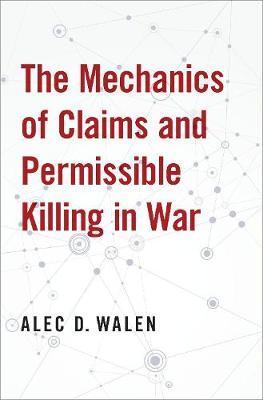
3:16: You’re a philosopher of law and one of the areas you've looked at is when is it permissable to kill someone - or withdraw their right not to be killed. But actually by framing the issue like that I'm walking into the territory you're wanting to challenge. By putting the question in terms of forfeiting rights - ie forfeiting the right not to be killed - I'm assuming that defensive killing needs to worry about liability to be harmed. This is what you've been working to rethink haven't you. So to start with, can you say what the view of rights in this area are usually assumed - what is the general argument or assumption behind taking forfeiture into consideration?
AW: The standard view of rights is based on the sensible thought that rights correspond to duties. There are two paradigmatic sorts of duties, and thus two paradigmatic sorts of rights. The duties are the duty not to harm and the duty to take care of one’s special commitments, commitments inside special relationships, such as promisor to promisee, or parent to child. Thus, the two paradigmatic kinds of rights are: (1) negative rights, which protect rights-holders from having important interests harmed by others, and (2) special rights, that arise in special relationships. It is not that these are the only conceivable rights. Those who accept duties to aid would say that in certain situations, people have corresponding rights to aid, even when there is no special relationship. But that’s a debate driven by the limits of positive duties.
The problem for the standard view arises from the fact that it is not the case that these rights must always be respected. Sometimes, to save some, it is permissible to harm others. Likewise, there are good reasons to break promises. This raises the question: what then is the significance of having rights? The standard answer has two parts. First, if A has a right, as opposed to a mere interest, that makes it somewhat harder to justify pursuing competing goods. In this sense, rights raise a kind of moral barrier to their neglect. Second, even if an agent has sufficient moral reason to get over that barrier, she will presumably have wronged the right-holder. The only way, according to the standard theory, to do what would normally wrong a right holder, without wronging the person, is if she has waived or forfeited her right.
I think much of this standard picture is wrong, for reasons I’ll explain below. But I don’t object to the idea of rights forfeiture. I think it is a central part of rights, because it allows us to hold agents responsible for their choices. We impose forfeiture insofar as it would be unfair for us not to make the agents who make such choices bear some of the normative costs. Thus, for example, it makes sense to say that a culpable aggressor forfeits the standard right not to be killed. Or, putting it in language that I prefer: a culpable aggressor forfeits much of the strength of his claim not to be killed, making it easier to justify killing him.
My point with regard to forfeiture is that it is only one way in which claims, such as the claim not to be killed, can be made weaker than they might otherwise be. Claim strength reflects, I think, a number of different moral considerations. Focusing on the claim not to be killed, I think it is very strong if it is the claim not to be killed because one is being used as a means to saving others. It always gives rise to a right not to be so used, unless one forfeits or waives the underlying claim—I make an exception for cases in which respecting rights would be disastrous, cases that count as threshold deontology, but I think those cases are very marginal and ignore them in the rest of the discussion. One has a weaker claim not to be killed if one would be killed as a side effect of pursuing some independent end. One has an even weaker claim if one is a threat to others, even the kind of innocent threat who should not be taken to have forfeited his claim in any way. Forfeiture produces even weaker claims. But again, it is not the only way to have a weak claim not to be killed, and thus it and waiver are not the only explanations for why one might lack a right not to be killed.
3:16: How has the recent history of defensive killing developed - can you sketch for us the main considerations of the developments since, say, the article by Judith Jarvis Thomson back in 1991, so that we can track the nuances of the position.
AW: I cover this in chapter 1, § 1 of my book. Here’s a brief summary: Thomson did a great job articulating the standard model of rights, and she set the terms of the debate. My job has been largely to show that the debate has reached a kind of dead end, and that we need to go back and rethink the standard model that she articulated so well.
The essence of the dead end turns on two thoughts. First, there’s the thought that rights have to carry some real weight, so that killing is permissible only under two circumstances: (1) the right can permissibly be infringed—as opposed to impermissibly violated—if but only if a much greater good calls for doing so, or (2) the right holder has forfeited his right not to be killed (waiver usually does not figure in the discussion). Second, forfeiture is presumed to require at least responsibly choosing to put others at risk, thereby taking on the burden of dying if someone has to die. That means that someone who did nothing that could reasonably be taken to be the basis for rights forfeiture can permissibly be killed only if a much greater good calls for doing so.
Two difficulties arise from this position. First, it looks like it will be very hard to justify acting in self- or other-defense against an innocent threat. But intuitively, if a person poses a threat, and lacks the right to do so, it is not so hard to justify using self-defense. This intuition has led to two attempts to save the theory. One is to say that by being a threat one takes on a duty to absorb some harm, and the remaining claim one has not to be harmed is then easier to override for the sake of a greater good. The other is to say that agents have special prerogatives to act in self-defense, even when the other person has a right not to be killed.
I think both of these saving moves fail. Regarding the duty move, suppose that A has a duty to help V and B doesn’t, but add that A’s duty falls well short of sacrificing his life for V. That does not provide any reason to think that if V needs to kill one of them to stay alive, V should kill A. Regarding the idea of agent-centered prerogative: that notion allows far too much self-serving harm to others. In addition, it can’t explain a basic asymmetry: third parties should feel more at liberty, and arguably have more of a moral reason, to help someone defend against an innocent aggressor than to help someone kill an innocent bystander—the latter is clearly impermissible, the former is not. But if agents enjoy agent-centered prerogatives, they should be equally free to kill innocent bystanders and innocent threats, and third parties should be equally barred from helping them in both cases. That’s a mistake.
The other difficulty that arises from the standard position is that it looks to many that merely making a responsible choice to act in a way that imposes risks on others is not reason enough to strip someone of a fundamental moral right like the right not to be killed. It seems that one should want real fault for that sort of forfeiture. But then it gets even harder to make sense of the use of defensive force in contexts in which it seems justifiable.
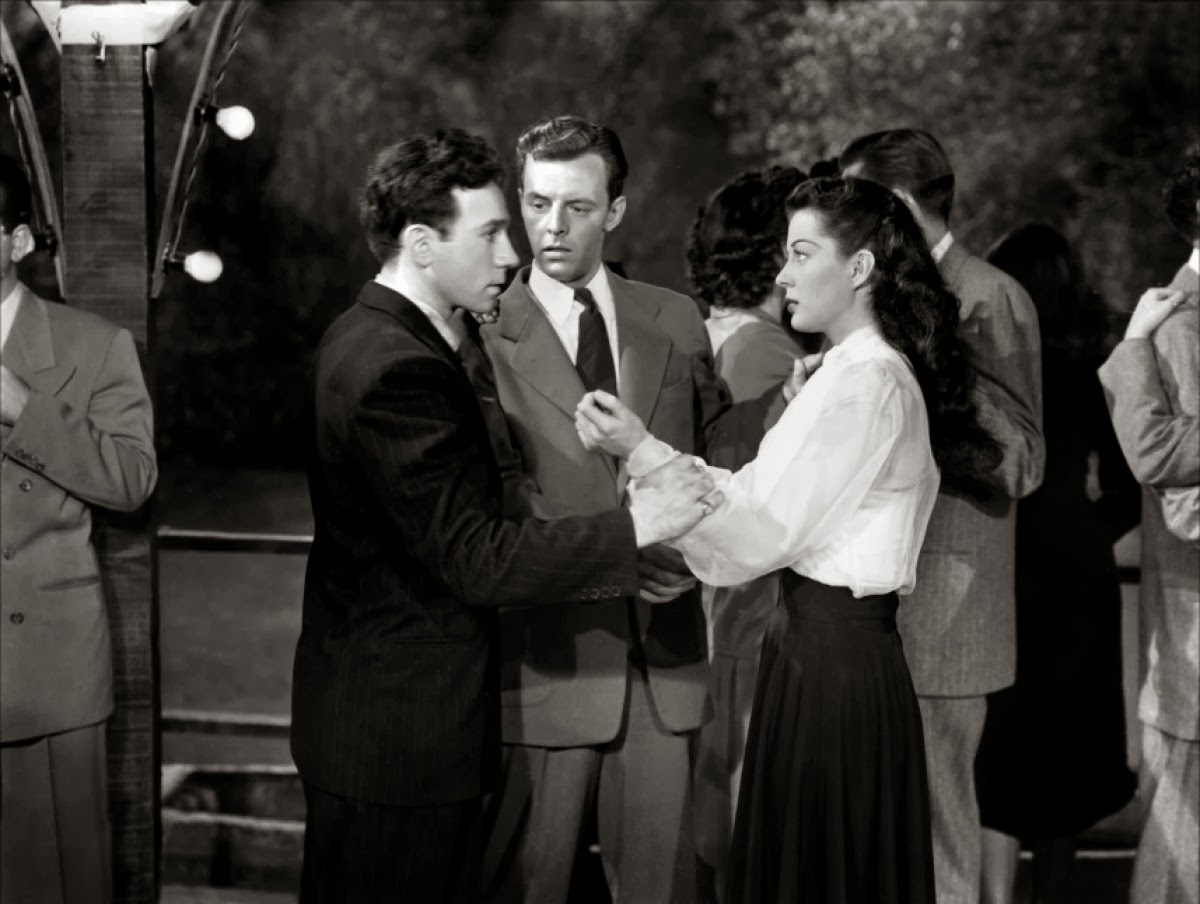
3:16: What are the cases of the Conscientious Driver and Hologram supposed to show - and why do they fail?
AW: Conscientious driver is a case Jeff McMahan proposed to explain why defensive force should be permissible if someone has taken a risk, even a reasonable risk, of imposing harm on others. The comparison is with someone who, say, just went out for a walk, and reasonably did not think that she was thereby doing anything to put others at risk. If she is nonetheless picked up by some villain and thrown as a projectile at some innocent victim, she should not be taken to have forfeited any rights not to be killed. She is an innocent threat. The conscientious driver, in contrast, does impose risks on others, because she knows that there is a small chance that something will go wrong with her car and will turn her and it into a lethal projectile. McMahan’s thought is that the driver has to assume the risk, in the sense that if someone has to die—she or a pedestrian—she should be the one. She should be taken to have forfeited her right not to be killed insofar as killing her is necessary to save a pedestrian.
Hologram is a similar case, proposed by Michael Otsuka. In that case, the responsible agent mistakes a holographic gun projected onto another person’s hand for a real gun. Based on that mistake, the responsible agent pulls her own gun to shoot the person who she mistakenly thinks has pulled a gun on her. Otsuka’s thought is that by pulling a gun on someone who was not a threat, the responsible agent forfeits her right not to be killed, even though her mistake was perfectly innocent. In essence, the thought is that she takes the risk of being the one to have forfeited her right to life by pulling her gun.
I think both cases fail to establish that anyone has forfeited a right if one starts with the premise that both McMahan and Otsuka accept, namely that “there must be some important moral difference” between the responsible threat and the innocent victim. One can try to argue, as McMahan and Otsuka do, that there is a meaningful asymmetry between the person who poses the initial threat and the person who responds to it. But as Seth Lazar pointed out, there’s really a strong Coasean symmetry between them. Take the driver and pedestrian: if the pedestrian had not been on or near the road, there would be no need to use defensive force against the driver. By choosing to be on or near a road, the pedestrian was just as responsible for creating a situation in which someone would have to die. And neither the driver nor the pedestrian did anything that should not be done. Both seem, rather, to be merely the victims of bad luck. The only real difference is that the driver posed the threat. But that difference is present with the person who just went out for a walk and was picked up and turned into a projectile. There is no important moral difference to do the work the standard theory wants done.
My solution to these cases is to say that the innocent threat and the conscientious driver are not very different. Both are threats who have no right to threaten, and that fact erodes the strength of their claims not to be killed. The fact that the conscientious driver also imposes a risk makes her claim slightly weaker, but I reject the idea that “there must be some important moral difference” between the cases. I can say that because I don’t start with the idea that one simply has a robust right not to be killed, one that can be forfeited only if one does something morally significant. Rather, I think the right not to be killed comes out of the balance of competing claims on an agent. The right exists only if all the relevant moral considerations make it appropriate to say it exists.
3:16: What's so problematic with what you call this 'infringement model' of rights, the model that says that the rights people have do not settle what may be done to them?
AW: I call the standard model the “infringement model” because it holds that it is permissible to infringe rights. That is, it holds that an agent can override rights if the good at stake is sufficiently great that doing so is a “lesser evil.” In such cases, one says that the right has been permissibly infringed, but that the person who still had the right was nonetheless wronged. I find this model problematic, as I say in the book, for five reasons:
First, I find the idea of permissibly wronging people obscure and misleading. If it is permissible to perform act A, it should not violate anyone’s rights; and if A wrongs someone, it should be impermissible. The best reason to adopt the paradoxical standard view is that often we say, when someone is permissibly harmed or when a promisee is permissibly not given what they were promised, that they are due some sort of compensation or apology. But this leads to my second point:
Second, the infringement model oversimplifies when compensation is due. It implies that it is not due when people have waived or forfeited their rights, but that’s not always the case. And it requires us to say that when people are not due compensation, then they must not have rights. But that too is distorting. They at least have claims, and claims push in favor of having rights even if they fall short of grounding a right in the final analysis.
My third reason picks up one reason the emphasis on forfeiture is distorting: it makes it too easy to justify doing harm to those who have forfeited a right, and too hard to justify doing harm to those who have not. The problem shows up for this reason: the difference between forfeiting and not forfeiting a right must ultimately come down to a small difference, such as whether the person’s choice made it foreseeable that she imposed a risk on others or not, or whether her choice crossed some line in culpability or not. But the impact in the infringement model is that if A has not forfeited her right, then a substantially larger number of people need to have an equivalent competing interest if A’s interest is to lose, but if A has forfeited her right, then that multiplier drops away. This multiplier creates a large effect based on a small change. This multiplier makes no moral sense.
My fourth reason is a theoretical point: because the infringement model holds that interests that don’t give rise to duties are not picked up by rights, it has to weigh mere or “naked” interests against rights. But it has no good account of how to do so. For example, no one has offered any account of how much more protection an interest gets if picked up and protected by a right than if not.
My fifth reason is the mirror of the fourth: my own account of how to derive rights from the balance of claims—the Mechanics of Claims—does give us good theoretical insight into how competing interests should be weighed in a wide variety of situations. The infringement model can stipulate similar points, but because it has no deep account of how rights and interests relate, it is ad hoc. For example, the Mechanics of Claims allows us to frame a deep account of why it is particularly hard to justify using people as a means; that account is unavailable using the infringement model.

3:16: And why do you say that it is a model that is morally distorting?
AW: This picks up on my third point in response to the prior question: if forfeiture is required to act in self-defense, and whatever standard of forfeiture is not met, then it would only be permissible to act in self-defense if many people’s lives were threatened. But if the standard for forfeiture is met—and again, a small moral difference will inevitably make the difference between forfeiture and not—then it would be permissible to kill many threats to save the life of just one person. This is too big a jump.
3:16: Against the infringement model and these difficulties you argue for 'the mechanics of claims' alternative model. Can you sketch for us what this alternative model does?
AW: The Mechanics of Claims (MOC) holds that rights form a normative space that tells us what is permissible. The space is constructed by assessing the balance of patient-claims on an agent, and then asking if the agent has an agent-claim to be free to do other than what the balance of claims on her would have her do. The important thing is that rights are not the starting point for the analysis; they are the upshot of the balance of a two-step balance of claims. (This balance sets “basic rights”; one can then ask about special claims that push to limit the liberty rights agents have, given the balance of basic claims.)
The primary virtue of this model is that it allows us to ask what kinds of factors make both patient- and agent-claims stronger or weaker. That allows us to make sense of the rights we have at the end of the day. This provides a more flexible and nuanced approach to rights than the infringement model.
Importantly, the MOC is also a better model than the standard alternative to the infringement model: “specificationism.” According to specificationism, rights are a completely conclusory notion; all the work is done elsewhere. First we figure out what an agent may do, and then say that she has a right to do those things, whatever they are. The MOC, unlike specificationism, makes the space of rights a meaningfully structured space with a distinctive rights-content: the content provided by analyzing the balance of claims on an agent and then asking if she has an agent-claim that would allow her to go against the balance of claims on her.
3:16: How does this approach address the difficulties of the infringement model?
AW: First, it denies that there is such a thing as infringing a right. If a patient has a right that an agent do X, then the agent must do X. Any failure to do X violates the patient’s right against the agent and wrongs the patient. But if the patient has a claim that the agent do X, and that claim is not strong enough, in the final balance, to ground a right that she do X, then we can say that the claim is permissibly contravened. There is no rightful wronging (again, outside the marginal area of threshold deontology).
Second, contravening a claim may or may not give rise to a secondary right for compensation. I say that the question about compensation normally turns on whether the permissible act shifts someone else’s burden onto a patient. If it does, the patient will normally have some claim for compensation—normally against the other patient whose claim justified the agent in shifting the burden onto the now burdened patient.
Third, we can make sense of why claims might be relatively weak, holding the interest at stake constant, for reasons having nothing to do with forfeiture. This topic is where the theory was really born. The paradigmatic case concerns claims not to be harmed as a side effect vs claims not to be harmed as a means. The latter, I argue, are claims that reflect the way agents have to divide up the world between themselves. Agents act using means to achieve their ends. Agents need control over a certain set of means to formulate plans for leading their lives—property claims address this need. The property that an agent can count as part of her “toolkit” sets her baseline freedom for navigating the world. Another’s patient-claim not to be used as a means is a claim that registers as demarcating the limits of the affected agent’s baseline freedom. Contrast that with the way a claim not to be harmed as a side effect registers. It pushes to restrict the things an agent can do with her baseline freedom. That sort of restrictive pushing has the capacity to limit what an agent might do for herself or others. Because it pushes to limit an agent relative to her baseline freedom, it should be counted as though it pushes to impose something like a negative externality on those others. That makes it weaker than a claim that does not push to impose such an externality.
That, in brief, is the Restricting Claims Principle. It appeals to some basic underlying principles: primarily about the important function rights serve in giving us a normative space in which to lead our lives. By thinking about how that function gives us reason to treat certain kinds of claims as stronger than others, all else equal, we can make sense of the Means Principle.
We can also make sense of why threats have even weaker claims. I’ll say more about this below, but the idea is that they have to own the fact that their presence as threats, if accompanied by the right not to be attacked to prevent the threatened harm from materializing, would make others worse off, and that too is a basis for having relatively weak claims. This picks up my fifth point: that we get certain insights into the way rights work by using the kind of reasoning that is available only if one uses the MOC.
Finally, with regard to my fourth complaint against the infringement model, the MOC does not ever refer to naked interests. Interests are always picked up by claims of one type or another. For example, the interest in being saved from a threat is picked up by a claim to be saved; the interest the threat has not to be killed is likewise picked up by a claim. And the strength of these claims is a function of the type of claim—e.g., whether a positive claim for aid, or a negative claim not to be harmed, whether restricting or not, whether or a threat or not—and the strength of the interest it picks up.
3:16: What are the fundamental moral principles that the distinctions determining the different kinds of claims are based on?
AW: There are three fundamental principles:
The autonomy principle holds that agents are fundamentally free to lead their own lives, but that they have to be responsible for the choices they make and the effects they have on others.
The equality principle holds that all full moral agents, those capable of navigating the space of rights, are fundamentally equal “citizens” of the space of rights. This does not mean that they have all the same rights. They will have different property rights and different special claims; some will have forfeited, transferred, or waived certain claims that they otherwise would have had. But it means that absent forfeiture, transfer, or waiver, and prior to considering special claims, and assuming basic distributive justice, all claims that are of the same type and concern the same interests, have the same weight in the balance.
The welfare principle holds that welfare matters in the space of rights. One implication is that, unlike the view in the infringement model, according to which the interest people have in being aided is often just an interest, claims for aid real claims. They may not give rise to rights if patient-claims not to be harmed or agent-claims not to have to give aid outweigh them in the final balance. But they are just as much a part of the space of rights as these other types of claims.
3:16: Can you explain how your model shows that Threats who have no right to threaten have weaker claims not to be harmed than bystanders who might be harmed as a side effect, all else equal. 'threats who have no right to threaten have weaker claims not to be harmed than bystanders who might be harmed as a side effect, all else equal.'
AW: The key idea here is that threats have to own their luck. This idea of owning one’s luck is a fundamental implication of the autonomy principle. Owning one’s own luck is an unavoidable part of being an agent who takes responsibility for herself and the impact she has on others in the course of leading her own life.
To see how that matters to threats, start with the baseline of bystanders. The thought is that bystanders, who have a claim not to be harmed as a side effect, have restricting claims: claims that push to restrict agents relative to their baseline freedom. (See the earlier point, in response to Q 8, about the Restricting Claims Principle.) Restricting claims are weaker than property claims because the patient who has them has to own the bad luck of presenting a moral obstacle to an agent who would otherwise be free to respond to the claims of others.
Restricting claims not to be harmed are stronger than positive claims for aid, all else equal. But they are not much stronger. Their extra strength depends only on the thought that those with positive claims have the bad luck to have restricting claims—they push to restrict an agent from being free not to help them, but they also have the bad luck to need aid. This is in contrast with those with negative claims, who have only the bad luck of being a kind of moral obstacle to an agent doing what she would otherwise be free to do, given her baseline freedom, for those in need.
Threats have an extra degree of bad luck, compared to bystanders. They don’t need aid, but they have to own the fact that they are causing others to be in need of aid. This weakens their claims relative to those who do not threaten to make others worse off (except by being moral obstacles). It is the ownership of this extra bad luck that distinguishes threats from bystanders.
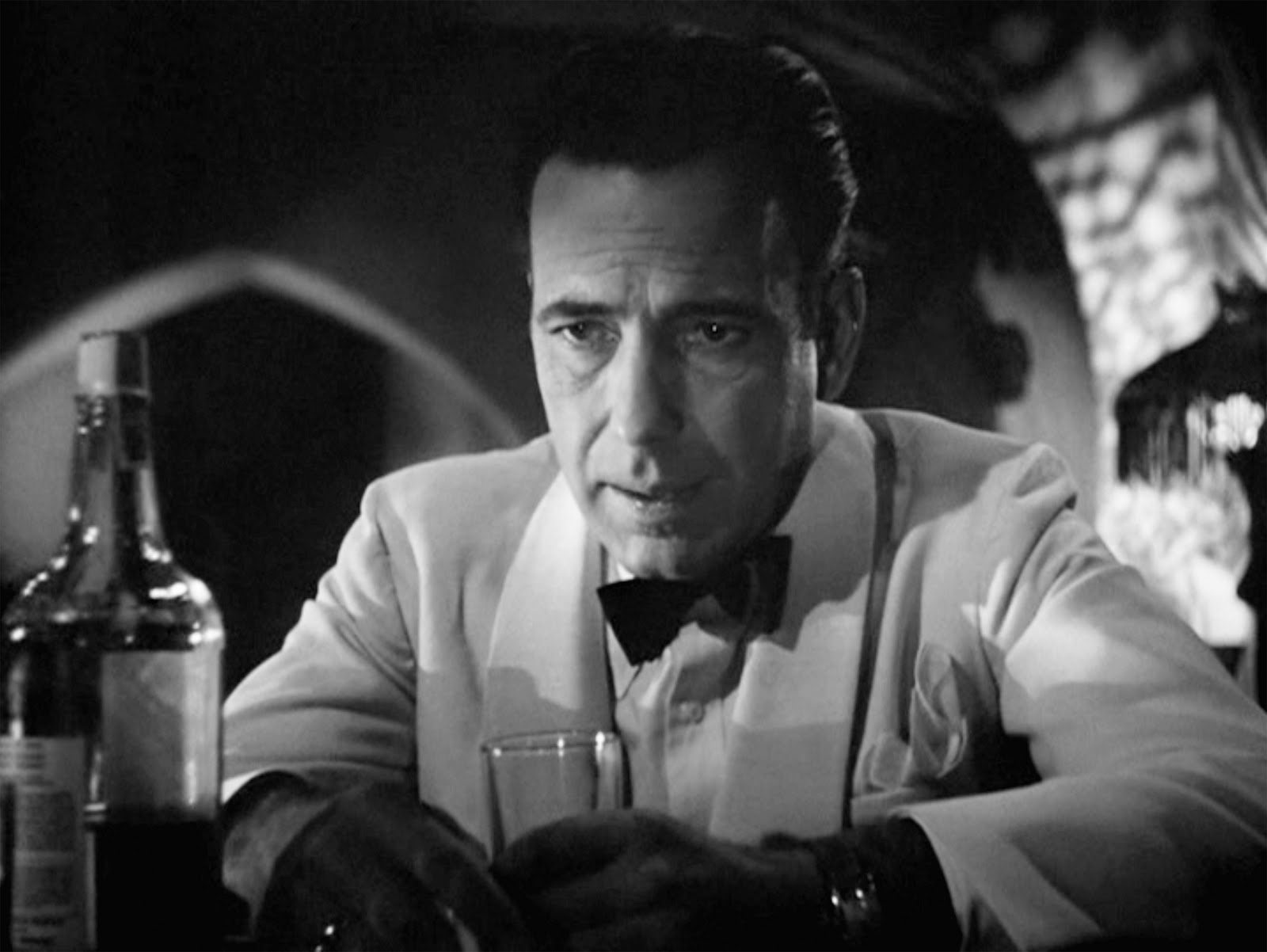
3:16: Is there a right of non-sacrifice? Why is this case puzzling, how does your approach deal with the puzzle, and how are the ideas relevant to just war theory and eliminative killing in the context of the case you discuss involving an intervening agency?
AW: The right of non-sacrifice is based on a claim not to have to sacrifice oneself for others. This is a profound agent-claim, based on the basic principle that we have our own lives to lead. Normally the agent-claim concerns what an agent may refuse to do. She is not obliged to sacrifice herself for others to whom she owes no special duties. But the right of non-sacrifice includes a positive agent-right as well as a negative one.
Making sense of the positive right to cause harm is the key puzzle that requires us to discuss the right of non-sacrifice. The puzzle arises because I think it is quite important that agents generally do not have positive claims to be free to do things that harm others for their own sake. (See my comment on agent-centered prerogatives in response to Q 3.) A may not, for example, kill a bystander to save herself. She must see her own claim to save herself as essentially a patient-claim to be saved, which is weaker than a patient-claim not to be killed. And she must see herself as having no meaningful agent-claim in that context. That is, she has no agent-claim sufficient to override the balance of patient-claims on her. But if she is seeking to perform an act that, in essence, denies others the use of her body, then she may act. Just as she may refuse to jump into harm’s way to save others, so she may duck out of harm’s way because others have no claim that she stay put and serve as the means of saving them. That is the one time when a positive right to act is quite strong: when it is the expression of the right of non-sacrifice, modeled on the idea of ducking.
This addresses two kinds of puzzling cases. First, some think that if V is in a position to serve as the means of protecting others, then an agent may not rescue him, because they all have claims to be rescued and the claims of many outweigh the claims of V. I say that is wrong. The claims of the many are claims to be given the use of V’s body. V has a right of non-sacrifice. The agent can directly respond to V’s claim to be saved; she can only respond to the claims of the others by essentially negating V’s right of non-sacrifice. (To state the case correctly requires more conceptual machinery, but this gives the flavor of the right answer.)
Second, people worry about what to do if A is confronted with a surgeon who will soon, if not stopped, save many lives, but who, in the meantime, is coming to kill A, without a right to do so. May A save herself if the only way to do so is to shoot the surgeon? The answer is yes, because that is an expression of the right of non-sacrifice. Those who would be saved by the surgeon are, in effect, making the claim on A that she allow herself to be killed so that they can use the resource that is the surgeon. But A does not owe them that sacrifice, to preserve the resource that they want.
One reason to develop this idea is to undermine the thought that intervening agency has a strong role in explaining why it is impermissible to go after indirect threats, such as noncombatants who help unjust combatants to fight. Indirect threats threaten by making it possible for direct threats to threaten. Many have thought that the reason it is impermissible to kill noncombatants who help unjust combatants to fight is that the unjust combatants are the direct threats, and only the direct threats may be responded to with force (or that the justification for going after indirect threats is much harder to achieve). I argue that there is no reason to accept that idea. One part of that argument is to say that the reason it is not permissible for people in, say, the surgeon case to go after A—who is after all, threatening to cause them to lose a resource that will save their lives—is that A has a right of non-sacrifice. That is a very limited explanation of why A might act. It does not cover other cases in which A might do other things that threaten people, including unjustly going after people who might help them, or unjustly enabling people to unjustly harm them.
In other words, rather than appealing to intervening agency as itself doing important work, I want to look at the right to affect others in ways that trickle down to harm third parties as having a very narrow ground. If A is exercising the right of non-sacrifice, and thereby enabling or causing another agent to directly harm the ultimate victims, the victims cannot go after A. A is protected by her right to cause (indirectly) the threat. But if A is merely shielded by the fact that she enables or causes others to threaten ultimate victims, and if neither A nor the direct threats have a right to threaten, then A gets no protection from the fact that she is an indirect threat.
3:16: On your model can we completely ignore trying to work out when people have forfeited their rights and are liable to harm? Are people in some situations lacking a reason not to be killed even if they have done nothing to forfeit a right not to be killed?
AW: Forfeiture is relevant—see my answer to Q 2. It is easier to justify killing culpable aggressors than innocent aggressors. My point is only that one does not need to argue for the presence of either forfeiture or a massive improvement in the good (sufficient for a lesser-evil justification of infringing rights) to justify using force against threats who do not have the right to threaten.
3:16: Is it justifiable to kill noncombatants who help unjust combatants according to your model? What does this show about the limits of necessity and proportionality?
AW: In principle, yes. And what that shows is how important the limits of necessity and proportionality are. It is impermissible to kill people when doing so is unnecessary to achieve the good in question, and if doing so causes disproportionate harm (measured in terms of claim strength, not mere interests). In addition, noncombatants may not be attacked in order to serve as a deterrent to others; that’s terrorism. They may be attacked only insofar as that is the best way to respond to the claims of others not to be killed. I think that will rarely be the case. Maybe only when the noncombatants have specialized roles supporting important military projects. And even then, it is crucial to realize that if they have a moral right to do what they do—because it has a dual utility, and its positive function is more important than its harmful function (think farmers)—they may not be attacked. So, while the view undoes the formalistic line between combatants and noncombatants, it does not license open season on noncombatants.
3:16: What do you think are the likely practical effects of your book arguing for your mechanics of claims model? A criticism of some philosophy is that it doesn't make a difference - and that moral philosophy doesn't change anything. Do legal philosophy books manage to make a difference? I guess my question is not so much whether people should heed philosophers but whether in practice they actually do?
AW: That’s a difficult question to answer; it’s more of a question for a historian or sociologist than for a philosopher. But obviously there are some instances in which philosophy has made a difference in the practical world: think Hobbes, Locke, Marx, and more recently Rawls. All have had real impact on political and legal actors. I don’t harbor the hope that with this book I will join their ranks as the kind of philosopher known for centuries onwards. But I do hope that it might contribute to changing the way we think about rights. And my ultimate hope is that by doing so I can provide a more secure foundation for a deontological moral view, one that will not be as vulnerable to attacks from the consequentialist/law-and-economics point of view.
3:16: And for the readers here at 3:16, are there five books other than your own that you can recommend to take us further into your philosophical world?
AW: 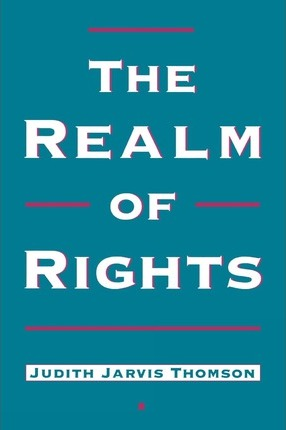
The primary target of my work: Judith Jarvis Thomson’s The Realm of Rights.
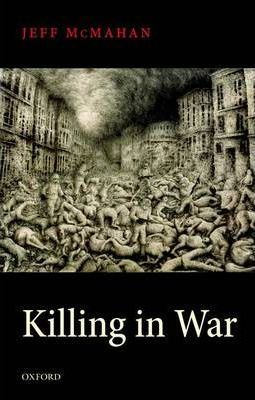
My secondary target, the person and book that did the most to develop Thomson’s work in the context of just war theory: Jeff McMahan’s Killing in War.
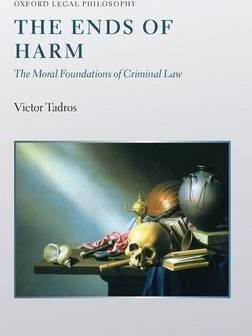
A contemporary who is pursuing ideas that largely converge with mine, though not interpreted in terms of rights: Victor Tadros, The Ends of Harm. (He also has a forthcoming book on just war theory that I have not yet read.)
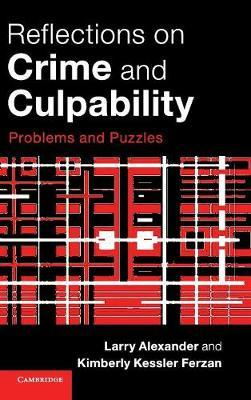
Another contemporary who very much helped me develop my ideas: Kim Ferzan, with Larry Alexander, especially in Kim’s chapters in Reflections on Crime and Culpability.
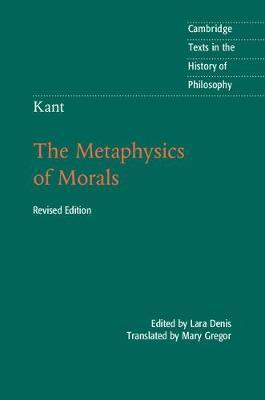
For the foundational inspiration for my view on rights: Kant, The Doctrine of Right.
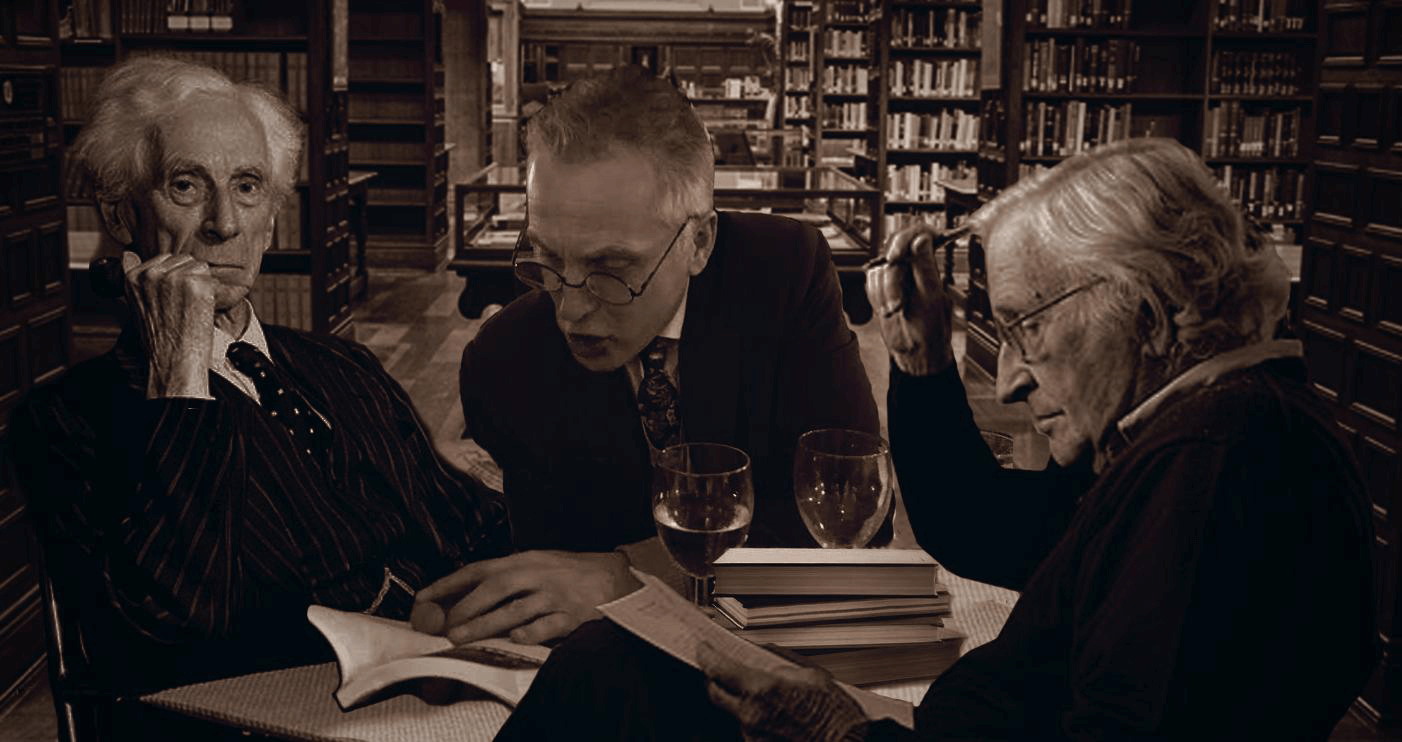
ABOUT THE INTERVIEWER
Richard Marshall is biding his time.
Buy his new book here or his first book here to keep him biding!
End Times Series: the index of interviewees